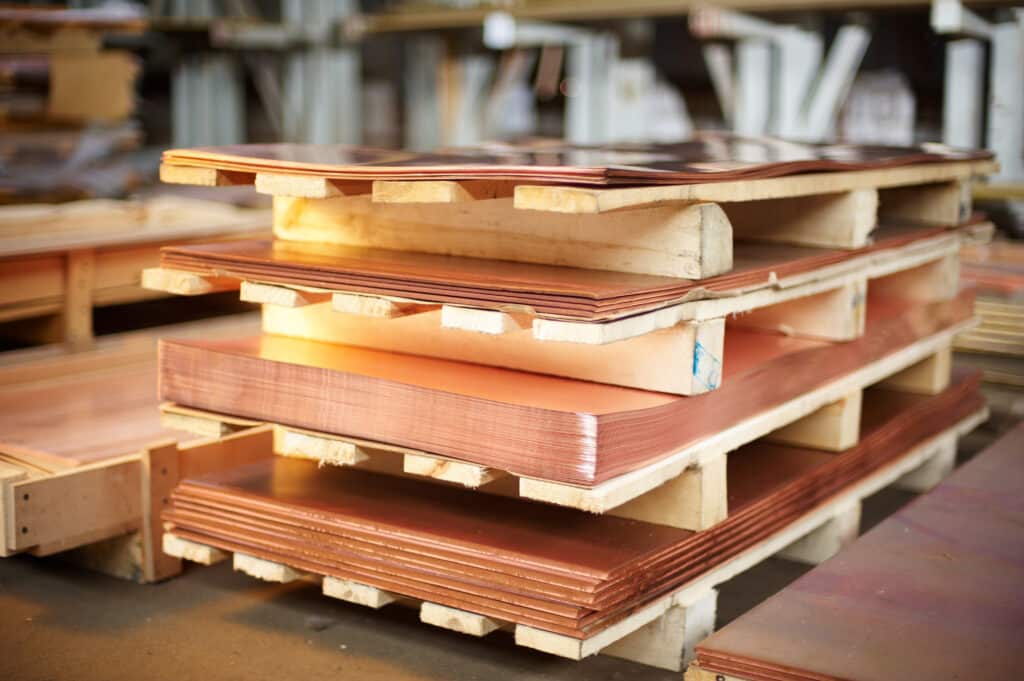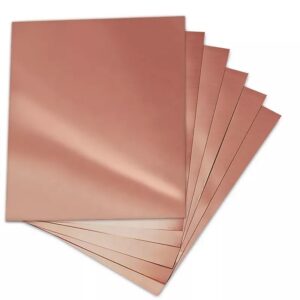- Massive Range
- FREE UK Delivery
- Rapid Dispatch
- Massive Range
- FREE UK Delivery
- Rapid Dispatch
- Massive Range
- FREE UK Delivery
- Rapid Dispatch
Menu
Home » Can Copper Sheet Be Welded? Exploring Techniques and Tips

Copper’s distinctive reddish-gold color and renown for thermal and electrical conductivity make it a versatile material that bridges functionality and aesthetics. In addition to being used in electrical wiring and plumbing, this metal can also be found in jewelry and decorative arts. It is often questioned whether copper sheets can be welded due to their unique characteristics, which present both opportunities and challenges.
Copper’s high thermal conductivity and melting point can significantly affect the outcome of welding copper sheets.
The purpose of this comprehensive guide is to provide detailed insights into the best methodologies for welding copper sheets. This copper welding exploration aims to demystify the process, ensuring that your copper welding endeavors will be both rewarding and fruitful.
We hope that it proves to be of use to you….
Its remarkable thermal conductivity is second only to silver, a metal with a melting point of approximately 1,083°C (1,981°F). It is beneficial for electrical and heat conduction, but poses significant challenges for welding, since the heat applied during the process is rapidly conducted away from the weld area. For effective melting and fusion, higher heat inputs are required, resulting in warping and distortion in thinner sheets due to rapid heat dissipation.
Copper’s oxidation rate when exposed to high temperatures can also affect weld quality. To minimise oxidation, careful surface preparation and the use of appropriate shielding gases are needed to prevent copper oxide from forming on the surface.
Copper’s weldability depends on its alloy composition as well. Due to its high purity and thermal conductivity, pure copper (Electrolytic Tough Pitch, or ETP copper) is generally more difficult to weld. Bronze and brass, which contain tin, zinc, or nickel, can have modified properties that make them more weldable. By altering melting points and reducing thermal conductivity, these alloys maintain copper’s desirable properties and improve its weldability.

Before welding, copper sheets require thorough preparation to enhance the quality of the weld. This preparation involves several critical steps:
Copper sheets can be welded using several techniques, each with its advantages and considerations:
TIG Welding: Due to its precision heat control and minimal filler material usage, TIG (Tungsten Inert Gas) welding is highly recommended for copper. It is ideal for thinner copper sheets, where controlling heat input is essential to avoid warping. The best results can be achieved by using a copper alloy filler rod and argon as a shielding gas.
MIG Welding: For thicker copper sheets, MIG (Metal Inert Gas) welding offers faster welding speeds. Because of the higher heat input, it may not be suitable for thin sheets. To facilitate better heat conduction and penetration, use copper alloy wire and argon or an argon-helium mixture for shielding gas when MIG welding copper.
Brazing: In brazing, a filler metal is melted into the joint between two copper pieces. Filler metals have a lower melting point than copper, preventing copper from melting. Copper pieces can be joined using this method without melting the base metal, reducing the risk of warping or distortion.
Adjusting Welding Parameters: No matter what method is chosen, it’s critical to adjust welding parameters such as heat input, travel speed, and shielding gas flow rate to accommodate copper sheets’ thermal conductivity and thickness. Copper can be preheated to a moderate temperature to reduce thermal gradients and minimise distortion.

Copper sheets present specific challenges that require thoughtful solutions to ensure success. Copper’s high thermal conductivity can lead to uneven welds and make it more difficult to maintain consistent weld pool temperatures due to excessive heat dissipation. During the welding process, trapped gases can create voids within the solidified metal, causing porosity in welds.
Solutions and Workarounds:
After welding, copper sheets require specific finishing steps to ensure the durability of the weld and the aesthetic coherence of the piece:
Maintenance Tips: It is important to inspect welded joints regularly so that any signs of wear or corrosion can be identified early on. Maintaining copper’s appearance and integrity over time is possible by cleaning it with appropriate solutions.
Despite presenting unique challenges, welding copper sheets opens up a world of creative and functional possibilities once mastered. The key to success is to understand and respect the material’s properties, choose the right techniques, and execute with care and precision.
To bring your welding projects to life, Speciality Metals provides you with quality copper sheets and expert advice, combining durability with unsurpassed beauty.
By following this comprehensive exploration of copper sheet welding, you can achieve both strength and elegance in your work with copper, whether it’s for structural or decorative purposes.
Contact us freely if you have any questions about this article, our materials or anything at all. We are always really keen to help.
As always, thank you for checking out our blog. We hope that this helps you with your project.
Please also check out the other articles in our helpful guide series. We have written about aluminium sheeting and checker plate recently to name but two of our articles.
We are also proud to sell this product on our highly popular eBay store, check us out there too.
If you have any further questions, feel free to contact us.




Speciality Metals
Unit 1, Farrell Street, Warrington,
Cheshire, WA1 2WW, United Kingdom
Quick Links
Payment Options
